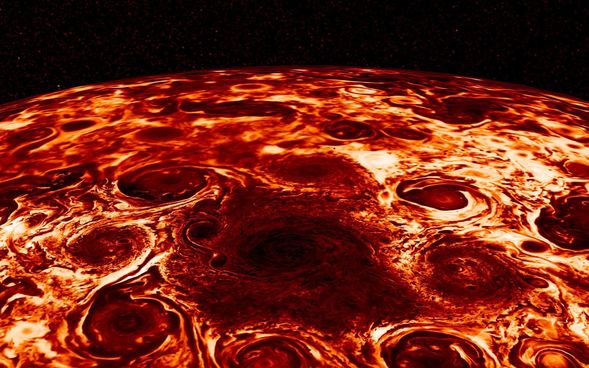The latest collected data and photos taken by the Juno probe, which is currently observing and conducting Jupiter research, has amazed astronomers from around the world. For a mosaic of images made with the Jovian InfraRed Auroral Mapper, we can see the areas of the northern pole of this planet, the largest in our Solar System, literally buried with groups of geometric cyclones.
These phenomena are much more powerful than hurricanes or typhoons occurring on Earth. For many years they have been blowing winds with speeds exceeding 350 km / h, and their diameters are several thousand kilometers long. The dark areas shown in the picture identify very dense layers of the atmosphere, while the bright places with a much thinner structure.
Before the Juno probe sent these fascinating pictures to Earth, astronomers assumed they would see the famous hexagon known to us all well from Saturn. However, despite the fact that both planets are gaseous giants, in reality they are very different and there are completely different phenomena. This once again shows how diverse objects are traversing only our solar system, let alone those located somewhere in the depths of the cosmos.

In the newest pictures we can see eight cyclones that surround one larger one. Each of them has a diameter of several thousand kilometers. Thanks to this valuable information, you can imagine how massive this phenomenon is.
Researchers do not hide that the new photos and data sent by Juno are surprising and intriguing for them. The most important discovery up to now is that the atmosphere of this gas giant is much thicker, very complex and goes much further into the planet than we previously thought.
Probably it is the "internal" processes that determine the appearance and disappearance of these extraordinary phenomena that we observe in the atmosphere of the planet. Astronomers now want to make more precise measurements of Jupiter's gravitational field, because they can enable us to answer questions about the dynamics of this object.